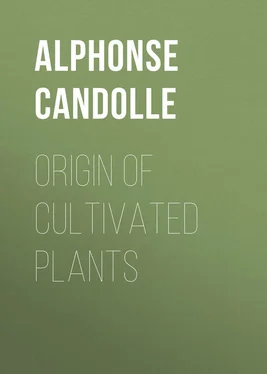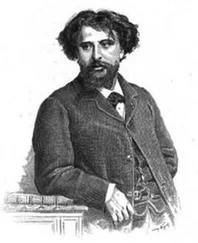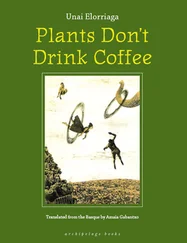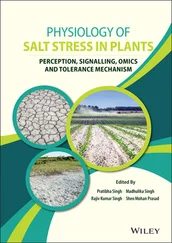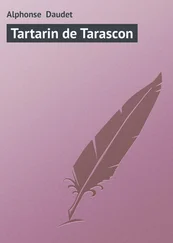Alphonse Candolle - Origin of Cultivated Plants
Здесь есть возможность читать онлайн «Alphonse Candolle - Origin of Cultivated Plants» — ознакомительный отрывок электронной книги совершенно бесплатно, а после прочтения отрывка купить полную версию. В некоторых случаях можно слушать аудио, скачать через торрент в формате fb2 и присутствует краткое содержание. Жанр: foreign_antique, foreign_prose, на английском языке. Описание произведения, (предисловие) а так же отзывы посетителей доступны на портале библиотеки ЛибКат.
- Название:Origin of Cultivated Plants
- Автор:
- Жанр:
- Год:неизвестен
- ISBN:нет данных
- Рейтинг книги:4 / 5. Голосов: 1
-
Избранное:Добавить в избранное
- Отзывы:
-
Ваша оценка:
- 80
- 1
- 2
- 3
- 4
- 5
Origin of Cultivated Plants: краткое содержание, описание и аннотация
Предлагаем к чтению аннотацию, описание, краткое содержание или предисловие (зависит от того, что написал сам автор книги «Origin of Cultivated Plants»). Если вы не нашли необходимую информацию о книге — напишите в комментариях, мы постараемся отыскать её.
Origin of Cultivated Plants — читать онлайн ознакомительный отрывок
Ниже представлен текст книги, разбитый по страницам. Система сохранения места последней прочитанной страницы, позволяет с удобством читать онлайн бесплатно книгу «Origin of Cultivated Plants», без необходимости каждый раз заново искать на чём Вы остановились. Поставьте закладку, и сможете в любой момент перейти на страницу, на которой закончили чтение.
Интервал:
Закладка:
CHAPTER II.
METHODS FOR DISCOVERING OR PROVING THE ORIGIN OF SPECIES
1. General reflections. As most cultivated plants have been under culture from an early period, and the manner of their introduction into cultivation is often little known, different means are necessary in order to ascertain their origin. For each species we need a research similar to those made by historians and archæologists – a varied research, in which sometimes one process is employed, sometimes another; and these are afterwards combined and estimated according to their relative value. The naturalist is here no longer in his ordinary domain of observation and description; he must support himself by historical proof, which is never demanded in the laboratory; and botanical facts are required, not with respect to the physiology of plants – a favourite study of the present day – but with regard to the distinction of species and their geographical distribution.
I shall, therefore, have to make use of methods of which some are foreign to naturalists, others to persons versed in historical learning. I shall say a few words of each, to explain how they should be employed and what is their value.
2. Botany. One of the most direct means of discovering the geographical origin of a cultivated species, is to seek in what country it grows spontaneously, and without the help of man. The question appears at the first glance to be a simple one. It seems, indeed, that by consulting floras, works upon species in general, or herbaria, we ought to be able to solve it easily in each particular case. Unfortunately it is, on the contrary, a question which demands a special knowledge of botany, especially of geographical botany, and an estimate of botanists and of collectors, founded on a long experience. Learned men, occupied with history or with the interpretation of ancient authors, are liable to grave mistakes when they content themselves with the first testimony they may happen to light upon in a botanical work. On the other hand, travellers who collect plants for a herbarium are not always sufficiently observant of the places and circumstances in which they find them. They often neglect to note down what they have remarked on the subject. We know, however, that a plant may have sprung from others cultivated in the neighbourhood; that birds, winds, etc., may have borne the seeds to great distances; that they are sometimes brought in the ballast of vessels or mixed with their cargoes. Such cases present themselves with respect to common species, much more so with respect to cultivated plants which abound near human dwellings. A collector or traveller had need be a keen observer to judge if a plant has sprung from a wild stock belonging to the flora of the country, or if it is of foreign origin. When the plant is growing near dwellings, on walls, among rubbish-heaps, by the wayside, etc., we should be cautious in forming an opinion.
It may also happen that a plant strays from cultivation, even to a distance from suspicious localities, and has nevertheless but a short duration, because it cannot in the long run support the conditions of the climate or the struggle with the indigenous species. This is what is called in botany an adventive species. It appears and disappears, a proof that it is not a native of the country. Every flora offers numerous examples of this kind. When these are more abundant than usual, the public is struck by the circumstance. Thus, the troops hastily summoned from Algeria into France in 1870, disseminated by fodder and otherwise a number of African and southern species which excited wonder, but of which no trace remained after two or three winters.
Some collectors and authors of floras are very careful in noting these facts. Thanks to personal relations with some of them, and to frequent references to their herbaria and botanical works, I flatter myself I am acquainted with them. I shall, therefore, willingly cite their testimony in doubtful cases. For certain countries and certain species I have addressed myself directly to these eminent naturalists. I have appealed to their memory, to their notes, to their herbaria, and from the answers they have been so kind as to return, I have been enabled to add unpublished documents to those found in works already made public. My sincere thanks are due for information of this nature received from Mr. C. B. Clarke on the plants of India, from M. Boissier on those of the East, from M. Sagot on the species of French Guiana, from M. Cosson on those of Algeria, from MM. Decaisne and Bretschneider on the plants of China, from M. Pancic on the cereals of Servia, from Messrs. Bentham and Baker on the specimens of the herbarium at Kew, lastly from M. Edouard André on the plants of America. This zealous traveller was kind enough to lend me some most interesting specimens of species cultivated in South America, which he found presenting every appearance of indigenous plants.
A more difficult question, and one which cannot be solved at once, is whether a plant growing wild, with all the appearance of the indigenous species, has existed in the country from a very early period, or has been introduced at a more or less ancient date.
For there are naturalized species, that is, those that are introduced among the plants of the ancient flora, and which, although of foreign origin, persist there in such a manner that observation alone cannot distinguish them, so that historical records or botanical considerations, whether simple or geographical, are needed for their detection. In a very general sense, taking into consideration the lengthened periods with which science is concerned, nearly all species, especially in the regions lying outside the tropics, have been once naturalized; that is to say, they have, from geographical and physical circumstances, passed from one region to another. When, in 1855, I put forward the idea that conditions anterior to our epoch determined the greater number of the facts of the actual distribution of plants – this was the sense of several of the articles, and of the conclusion of my two volumes of geographical botany 8 8 Alph. de Candolle, Géographie Botanique Raisonnée , chap. x. p. 1055; chap. xi., xix., xxvii.
– it was received with considerable surprise. It is true that general considerations of palæontology had just led Dr. Unger, 9 9 Unger, Versuch einer Geschichte der Pflanzenwelt , 1852.
a German savant, to adopt similar ideas, and before him Edward Forbes had, with regard to some species of the southern counties of the British Isles, suggested the hypothesis of an ancient connection with Spain. 10 10 Forbes, On the Connection between the Distribution of the Existing Fauna and Flora of the British Isles, with the Geological Changes which have affected their Area , in 8vo, Memoirs of the Geological Survey , vol. i. 1846.
But the proof that it is impossible to explain the habitations of the whole number of present species by means of the conditions existing for some thousands of years, made a greater impression, because it belonged more especially to the department of botanists, and did not relate to only a few plants of a single country. The hypothesis suggested by Forbes became an assured fact and capable of general application, and is now a truism of science. All that is written on geographical or zoological botany rests upon this basis, which is no longer contested.
This principle, in its application to each country and each species, presents a number of difficulties; for when a cause is once recognized, it is not always easy to discover how it has affected each particular case. Luckily, so far as cultivated plants are concerned, the questions’ which occur do not make it necessary to go back to very ancient times, nor to dates which cannot be defined by a given number of years or centuries. No doubt the modern specific forms date from a period earlier than the great extension of glaciers in the northern hemisphere – a phenomenon of several thousand years’ duration, if we are to judge from the size of the deposits transported by the ice; but cultivation began after this epoch, and even in many instances within historic time. We have little to do with previous events. Cultivated species may have changed their abode before cultivation, or in the course of a longer time they may have changed their form; this belongs to the general study of all organized life, and we are concerned only with the examination of each species since its cultivation or in the time immediately before it. This is a great simplification.
Читать дальшеИнтервал:
Закладка:
Похожие книги на «Origin of Cultivated Plants»
Представляем Вашему вниманию похожие книги на «Origin of Cultivated Plants» списком для выбора. Мы отобрали схожую по названию и смыслу литературу в надежде предоставить читателям больше вариантов отыскать новые, интересные, ещё непрочитанные произведения.
Обсуждение, отзывы о книге «Origin of Cultivated Plants» и просто собственные мнения читателей. Оставьте ваши комментарии, напишите, что Вы думаете о произведении, его смысле или главных героях. Укажите что конкретно понравилось, а что нет, и почему Вы так считаете.
